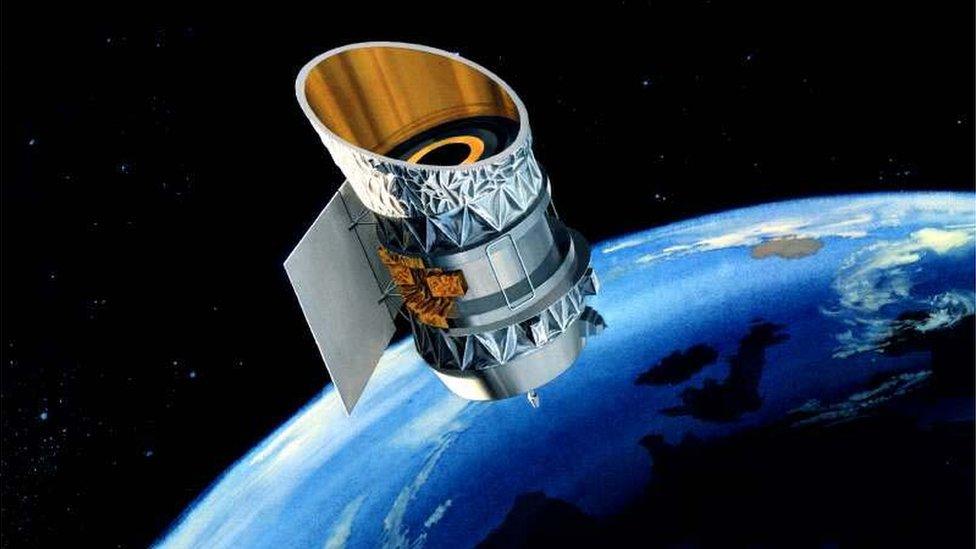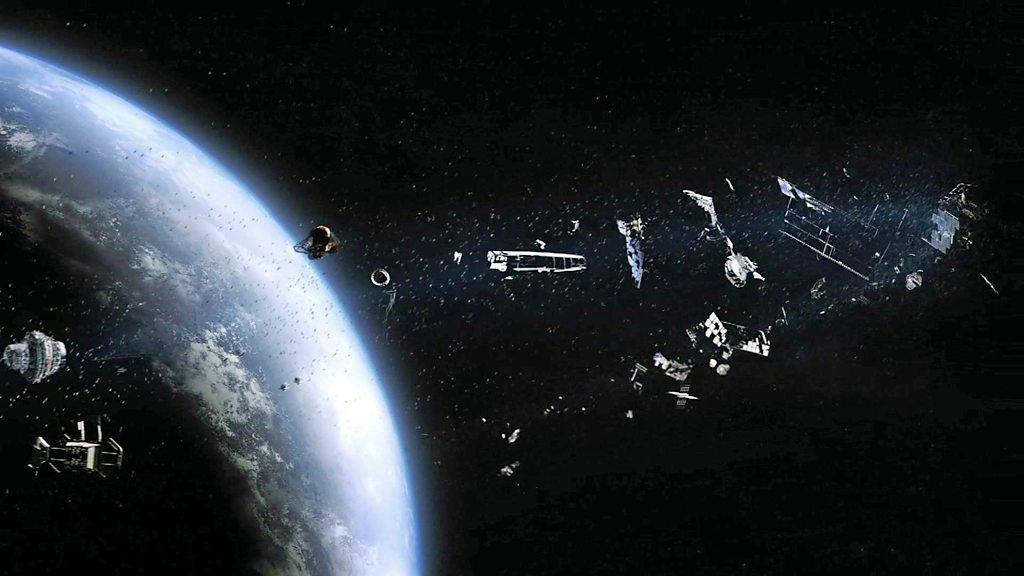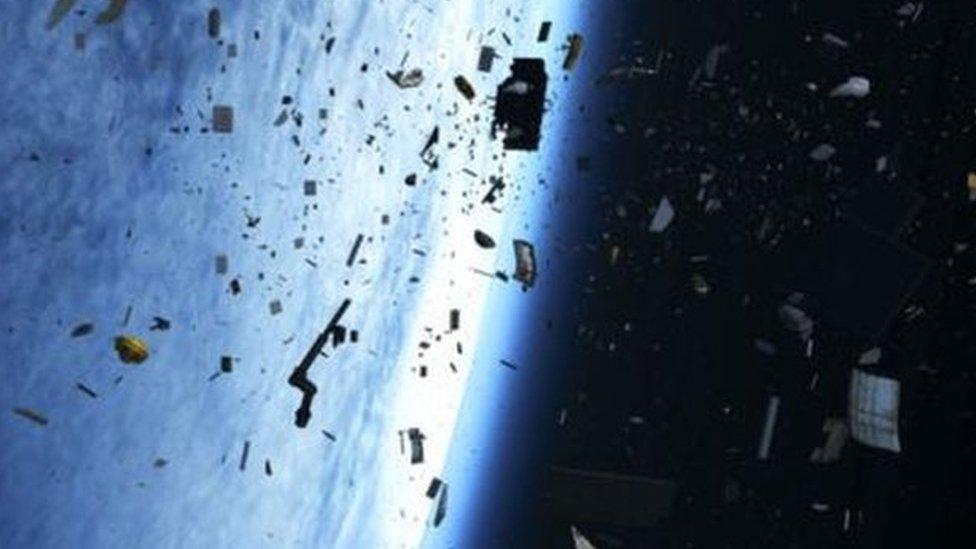Two satellites in close shave over US city of Pittsburgh
- Published

A drawing of one of the satellites on the near miss course
Two satellites hurtling across the sky at nearly 33,000 mph (53,000 km/h) narrowly missed a collision over the US state of Pennsylvania on Wednesday.
The two objects "crossed paths without incident," a spokesman for US Space Command told the AFP news agency.
US Space Command said the two inactive satellites passed each other at 18:39 EST (23:39 GMT) some 550 miles (900km) above Pittsburgh.
The last time a major satellite collision occurred was in 2009.
Experts predicted that the satellites could pass within 40ft (12m) of each other. They are not operational, but it was feared a collision could create pieces of debris that would damage other objects in orbit.
Allow X content?
This article contains content provided by X. We ask for your permission before anything is loaded, as they may be using cookies and other technologies. You may want to read X’s cookie policy, external and privacy policy, external before accepting. To view this content choose ‘accept and continue’.

The objects in question are an Infrared Astronomical Satellite (Iras) that was launched in 1983 and another experimental US craft, the GGSE-4 satellite, launched in 1967.
The GGSE-4 satellite has a 60ft (18m) boom - equipment designed to deploy antennae or solar sails - trailing it.
Jonathan McDowell, an astronomer at the Harvard-Smithsonian Center for Astrophysics, said, external that given the size of the satellites - about the size of a car and a rubbish bin - "a 15-to-30 metre predicted miss distance is alarming" - a sentiment echoed by LeoLabs, which tracks space junk.
Any debris would have posed no threat to the city, experts said, it would have simply burnt up in the atmosphere before it could fall to Earth. But a debris cloud that remained in orbit could have threatened other satellites.
Debris can remain in orbit for decades to centuries.
Tackling the Earth's orbiting space junk
The last large collision of satellites happened in 2009, when a US commercial Iridium spacecraft hit a defunct Russian satellite over Siberia, producing thousands of pieces of debris.
International guidelines state that satellites in low earth orbit must be removed from orbit 25 years after being decommissioned, but these satellites were launched prior to the rule changes.
The situation has renewed discussions over the importance of cleaning up space debris.
"Events like this highlight the need for responsible, timely de-orbiting of satellites for space sustainability moving forward," LeoLabs said.
Currently, there are around 2,000 active satellites orbiting the earth. There are also more than 23,000 pieces of debris larger than 10cm (4in) in orbit, according to Nasa.
Watch space debris grow from 1950s to 2017
According to data from the Union of Concerned Scientists, external, the US has 1,007 operating satellites, the most by far of any country. The majority are commercial.
A 2019 article in the Massachusetts Institute of Technology (MIT) Technology Review, external stated by 2025, there could be as many as 1,100 new satellites launching per year.
- Published3 January 2020

- Published23 December 2019

- Published8 April 2017
